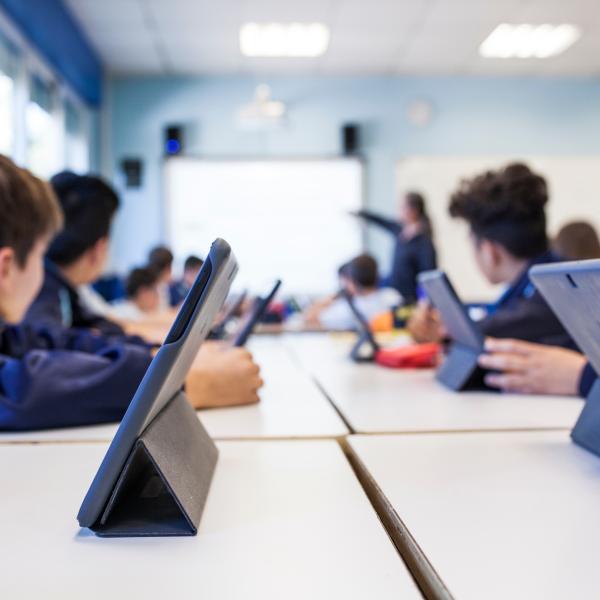In 2022–23, more than £245 billion was spent on delivering five key public services across England: the NHS, schools, local government, the police and public health. This funding was used to deliver services to people in specific places. The scale of this spending and the important contribution these public services can make to individuals’ life chances make it vital that funding for public services is allocated in an effective and fair manner.
Systems for allocating funding between different local areas must trade off several objectives. One important aim is to account for variation in the needs of different populations and places across the country. Local areas differ in their geographical and socio-economic characteristics, which may affect both the demand for and the cost of providing public services. For the same level of public services to be delivered across the country, helping to narrow geographical inequalities, different places will need different amounts of funding.
In this report, we estimate the total funding available for five services in each local authority area in England in 2022–23. Indeed, we find per capita funding does vary significantly between areas. Typically, areas that receive more per capita funding for one service also receive above-average funding for other services. More-deprived and more densely populated (typically more urban) places receive more funding per capita on average across all the services we examine.
To determine whether these different levels of funding allow for the same level of services to be provided across the country, we also need to understand the relative needs of different areas. We cannot directly observe these, and any estimates will be somewhat subjective, reflecting choices over which area characteristics to include. We take the latest available government estimates of the relative spending needs of different places, which capture the priority that government placed historically on different drivers of needs and on narrowing inequalities between places. As these are often out of date, we update them with more recent data – as best we can – to reflect changes in the populations and socio-economic characteristics of each area.
We compare the funding that each area received in 2022–23 with the funding it would have received if the total funding available for each service nationally was allocated to areas in proportion to these estimated relative spending needs. We find that there are significant discrepancies between relative levels of funding and estimated needs across the country. For instance, while more-deprived areas receive more funding, for local government and police services, they do not receive as high a share of the national funding pot as the formulae used in official spending needs assessments suggest they should. This echoes the findings of our earlier work (Ogden et al., 2022) that the funding systems for local government, public health and the police did not properly reflect differences in assessed needs across places and were unresponsive to changes in the relative needs of different parts of the country.
However, there are few areas that appear to be systematically advantaged or disadvantaged in terms of funding across multiple services. Those areas that receive a lower share of funding than their share of estimated needs for one service typically receive a higher share of funding than their share of needs for other services. These differences do not ‘balance out’ as, under current arrangements, funding cannot be easily shifted between services at a local level.
We also highlight how sensitive our results are to a range of assumptions – including different methods for allocating funding between areas (particularly within broader areas to which police and NHS funding are allocated), different assumptions about population levels, and whether to adjust for differences in the council tax levels that different councils and police forces levy. This allows us to be confident that patterns are robust to different choices of methodology.
Key findings
1. Funding for the NHS, schools, local government, the police and public health in England totalled more than £245 billion in 2022–23, and accounted for more than 40% of total current government spending. This scale, together with the importance of public services for health, well-being and life chances, makes how funding for public services is allocated between places very important.
2. Funding for delivering these services in specific places averaged £4,310 per capita across England, but this varied widely – from an estimated £3,642 in York, to £5,648 in Blackpool (55% more). Funding per capita was highest in inner London boroughs and relatively deprived, urban areas in the North, including parts of Greater Manchester, Liverpool and Teesside. It was typically below average across much of the South of England, and was £271 (6%) below average in the South East. More-deprived and more-urban areas receive more funding per capita across all services, although this is starkest for public health and least strong for local government. Areas with higher funding for one service also typically received higher funding for all other services.
3. Relative funding levels are particularly sensitive to choices around which set of population estimates to use. The latest figures from the Office for National Statistics (ONS), based on the 2021 Census, suggest that far fewer people lived in some parts of London (a quarter in Camden and Westminster) than expected when funding allocations were determined using population estimates that in part were based on the 2011 Census. These figures move Camden from the least-funded third of places (using the earlier population estimates) to the second highest funded per capita in England.
4. The amount that needs to be spent in different parts of the country to deliver the same level of services also varies widely, due to differences in both the demand for services and the costs of providing these. Based on the government’s needs assessments, updated to reflect the most up-to-date publicly available data, we estimate that Blackpool has the highest need for funding across the NHS, local government, police and public health – 74% higher than in Wokingham, which has the lowest estimated need.
5. NHS funding appears to be relatively well-targeted to estimated needs. For example, using ONS population estimates, two-thirds of areas receive a share of funding that is within 5% of their share of estimated spending needs. Using GP registered populations, which are the population estimates actually used in the NHS funding allocation process, this rises to nine in ten areas. This reflects that NHS funding is allocated to areas predominantly based on needs assessments, which are themselves fairly up to date.
6. Local government funding is much less well-targeted towards estimated needs, with only 39 areas out of 150 receiving a share of funding that is within 5% of their share of estimated spending needs. For instance, Wokingham received a share of local government funding that was 45% higher than its share of estimated needs, while Hounslow received 31% less. These large differences only partly reflect local choices around revenue-raising, and are largely due to the government prioritising other objectives in the local government funding system.
7. Similar issues affect allocations of police funding. Shares of police funding were furthest below shares of estimated needs for areas in the West Midlands (−19%) and Greater Manchester (−8%), while rural areas with older populations tended to receive higher shares of funding than they were estimated to need. These differences are only partially explained by differences in police council tax precept.
8. Public health funding is particularly poorly aligned with estimated needs, with some of the widest gaps in percentage terms. Slough received a share of public health funding that was 35% lower than its share of estimated needs in 2022–23, and Kensington and Chelsea received 116% more. While these differences are relatively small in cash terms (public health spending is just over 1% of overall spending on the services we examine), this reflects a clear failure of the government to ensure public health funding accounts for estimates of the relative spending needs of different populations and places.
9. While there are large gaps between funding and need for different services, it is not the case that some areas appear to be systematically disadvantaged across all services. In particular, areas that receive lower shares of NHS funding than their share of estimated need typically receive more funding than their share of estimated need for local government services. For example, while Cornwall’s share of NHS funding equates to £138 per capita less than its share of estimated needs, its share of local government funding equates to £156 more. The reverse is typically true in London. This still represents a significant misallocation of funding as it is not possible in practice to shift funding between NHS and local government services within areas.
10. Only a small number of areas are significantly underfunded across multiple services. Coventry and Dudley each receive a share of funding that is at least 5% less than they are assessed to need for three of four services. Expressed in cash terms (based on the nationwide funding for these services), Dudley receives £127 per capita less for the NHS, £122 less for local government and £47 less for police services than if funding was allocated in line with estimated relative needs.
11. Overall, the most-deprived fifth of areas receive a share of funding that is 3% lower than their share of estimated needs, and the least-deprived fifth of areas 3% more. This pattern is driven almost entirely by local government, where the gaps are much starker (−9% and +15%).
12. The broad patterns of funding, the estimated relative spending needs and the gap between the two across different types of places are robust to different choices around which population figures to use and how to allocate NHS funding within Integrated Care System areas and police funding within Police Force Areas. However, figures for certain individual areas do vary substantially (such as the example of Camden, above). This matters because funding allocation processes need to allocate funding to specific places, not just broad types of places – and uncertainty about key drivers of spending needs, such as population, is therefore problematic.













